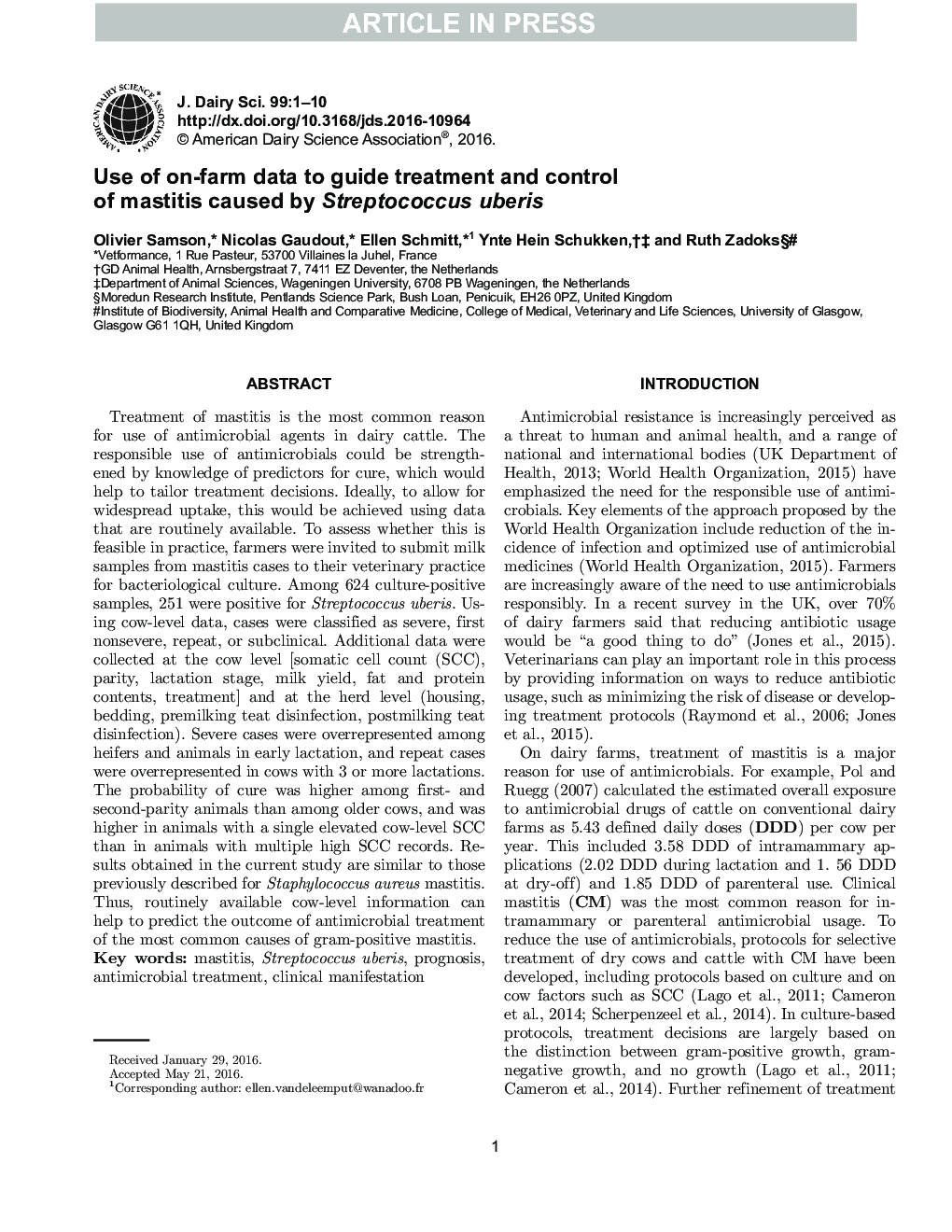| Article ID | Journal | Published Year | Pages | File Type |
|---|---|---|---|---|
| 5542875 | Journal of Dairy Science | 2016 | 10 Pages |
Abstract
Treatment of mastitis is the most common reason for use of antimicrobial agents in dairy cattle. The responsible use of antimicrobials could be strengthened by knowledge of predictors for cure, which would help to tailor treatment decisions. Ideally, to allow for widespread uptake, this would be achieved using data that are routinely available. To assess whether this is feasible in practice, farmers were invited to submit milk samples from mastitis cases to their veterinary practice for bacteriological culture. Among 624 culture-positive samples, 251 were positive for Streptococcus uberis. Using cow-level data, cases were classified as severe, first nonsevere, repeat, or subclinical. Additional data were collected at the cow level [somatic cell count (SCC), parity, lactation stage, milk yield, fat and protein contents, treatment] and at the herd level (housing, bedding, premilking teat disinfection, postmilking teat disinfection). Severe cases were overrepresented among heifers and animals in early lactation, and repeat cases were overrepresented in cows with 3 or more lactations. The probability of cure was higher among first- and second-parity animals than among older cows, and was higher in animals with a single elevated cow-level SCC than in animals with multiple high SCC records. Results obtained in the current study are similar to those previously described for Staphylococcus aureus mastitis. Thus, routinely available cow-level information can help to predict the outcome of antimicrobial treatment of the most common causes of gram-positive mastitis.
Related Topics
Life Sciences
Agricultural and Biological Sciences
Animal Science and Zoology
Authors
Olivier Samson, Nicolas Gaudout, Ellen Schmitt, Ynte Hein Schukken, Ruth Zadoks,
